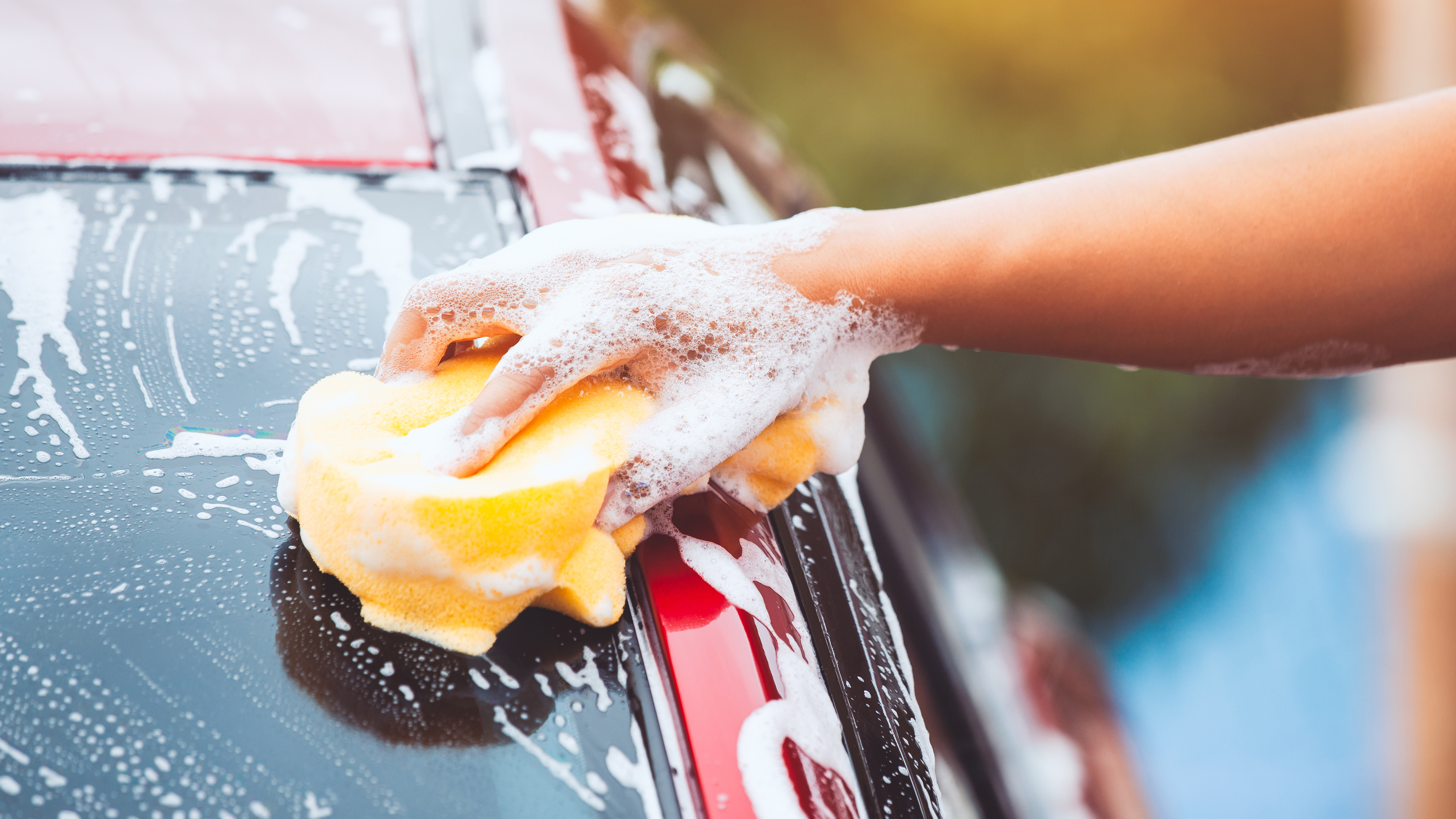Is polish good for your car?
Everything you need to know when it comes to polishing your car


Washing your car with a garden hose pipe isn’t enough. Even if you then tackle the baked-on dirt and grime with a couple of buckets of warm water and car shampoo, you won’t get the shiny showroom finish you’re after.
For that, a good polish is your answer. Car polish can be used to remove light scratches from the paint and clear coat above, while also making the surface shine. But, because of its micro-abrasive qualities, you should be careful about how the polish is applied and how often it is used. Polish a car too often, and you can cause more harm to the paint than good.
- Best car polish and car wax: refresh and protect tired paintwork
How car polish works
Despite its texture and the fact it can often be poured or squirted out of a bottle, car polish is abrasive. But only slightly. This abrasive property is used to remove a very fine layer of the clear coat that protects the paint of your car. In removing a thin layer, the thickness of the clear coat is reduced slightly, making shallow scratches disappear.
In short, the scratch disappears because the thickness of the surrounding paint or clear coat is reduced to match the depth of the scratch.
How to polish your car
Before polishing, the vehicle should be thoroughly washed with car shampoo then dried with a microfibre towel; make sure all water has been removed from the painted surfaces you want to polish.
You could then even use a clay bar to lift contaminants out of the paint, producing a glossy, smooth surface to polish. Making the surface as clean as possible should also help make it easier to see where the scratches and swirls are that you want to remove.
Once the car is prepared, apply a small amount of polish to a cloth or foam application pad and spread it around the area you want to work on. Make sure you only apply the polish to painted areas of the car and not unpainted plastic or rubber.
Get all the latest news, reviews, deals and buying guides on gorgeous tech, home and active products from the T3 experts
If polishing a classic car be very careful as it will likely lack a proactive clear coat and have soft paint that can easily be damaged by abrasive polish.
Rub the polish into the paintwork in circular motions (or in straight lines if that’s what the manufacturer instructions say) until it is almost transparent. At this point, some polishes need to be left to cure; again, follow the manufacturer's instructions for this step.
Finally, buff the surface with a very soft and clean microfibre cloth to create a showroom shine, regularly turning the cloth to keep it clean. You can also use a machine polisher, but make sure you know what you’re doing before starting, and be very careful about using these on older vehicles without clear coat.
Is polish good for your car?
Yes, as polish can be used to remove scratches and make your paintwork look better. But you need to be careful. A car cannot be polished an infinite number of times, as every time polish is used a tiny layer of clear coat or paint is removed. You should therefore not be polishing your car every week, or as often as you wash it with water and shampoo.
Instead, you should see polishing as something to be done every six to 12 months. Apply wax after the polish to create a seal on the paintwork, helping to protect it from damage.
Liked this?
- Best dash cam: top car dash cams tried and tested
- Best jump starter: bring your car back to life with these portable chargers
- Best car vacuum: keep your car crumb-free and immaculate
Alistair is a freelance automotive and technology journalist. He has bylines on esteemed sites such as the BBC, Forbes, TechRadar, and of best of all, T3, where he covers topics ranging from classic cars and men's lifestyle, to smart home technology, phones, electric cars, autonomy, Swiss watches, and much more besides. He is an experienced journalist, writing news, features, interviews and product reviews. If that didn't make him busy enough, he is also the co-host of the AutoChat podcast.
